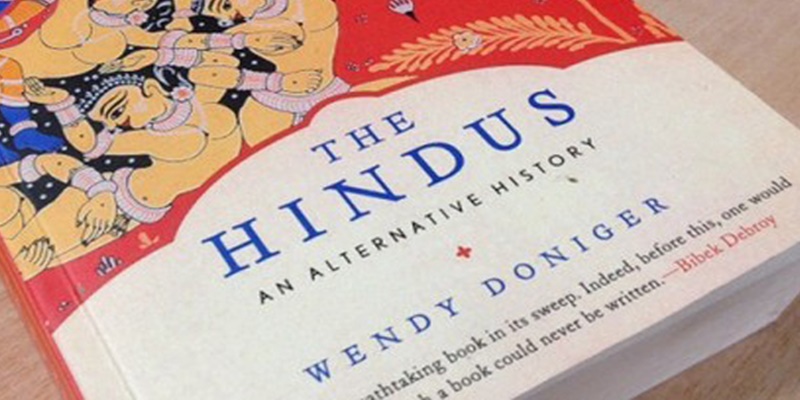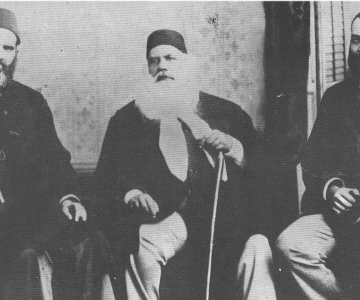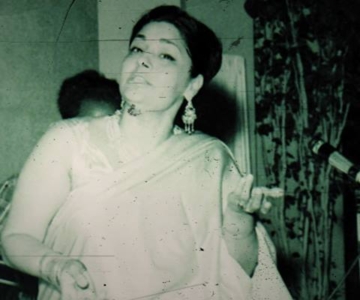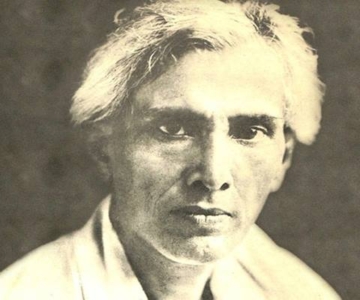Published in The New York Times
Visiting India in 1921, E. M. Forster witnessed the eight-day celebration of Lord Krishna’s birthday. This first encounter with devotional ecstasy left the Bloomsbury aesthete baffled. “There is no dignity, no taste, no form,” he complained in a letter home. Recoiling from Hindu India, Forster was relieved to enter the relatively rational world of Islam. Describing the muezzin’s call at the Taj Mahal, he wrote, “I knew at all events where I stood and what I heard; it was a land that was not merely atmosphere but had definite outlines and horizons.”
Forster, who later used his appalled fascination with India’s polytheistic muddle to superb effect in his novel “A Passage to India,” was only one in a long line of Britons who felt their notions of order and morality challenged by Indian religious and cultural practices. The British Army captain who discovered the erotic temples of Khajuraho in the early 19th century was outraged by how “extremely indecent and offensive” depictions of fornicating couples profaned a “place of worship.” Lord Macaulay thundered against the worship, still widespread in India today, of the Shiva lingam. Even Karl Marx inveighed against how man, “the sovereign of nature,” had degraded himself in India by worshipping Hanuman, the monkey god.
Repelled by such pagan blasphemies, the first British scholars of India went so far as to invent what we now call “Hinduism,” complete with a mainstream classical tradition consisting entirely of Sanskrit philosophical texts like the Bhagavad-Gita and the Upanishads. In fact, most Indians in the 18th century knew no Sanskrit, the language exclusive to Brahmins. For centuries, they remained unaware of the hymns of the four Vedas or the idealist monism of the Upanishads that the German Romantics, American Transcendentalists and other early Indophiles solemnly supposed to be the very essence of Indian civilization. (Smoking chillums and chanting “Om,” the Beats were closer to the mark.)
As Wendy Doniger, a scholar of Indian religions at the University of Chicago, explains in her staggeringly comprehensive book, the British Indologists who sought to tame India’s chaotic polytheisms had a “Protestant bias in favor of scripture.” In “privileging” Sanskrit over local languages, she writes, they created what has proved to be an enduring impression of a “unified Hinduism.” And they found keen collaborators among upper-caste Indian scholars and translators. This British-Brahmin version of Hinduism — one of the many invented traditions born around the world in the 18th and 19th centuries — has continued to find many takers among semi-Westernized Hindus suffering from an inferiority complex vis-à-vis the apparently more successful and organized religions of Christianity, Judaism and Islam.
The Hindu nationalists of today, who long for India to become a muscular international power, stand in a direct line of 19th-century Indian reform movements devoted to purifying and reviving a Hinduism perceived as having grown too fragmented and weak. These mostly upper-caste and middle-class nationalists have accelerated the modernization and homogenization of “Hinduism.”

Still, the nontextual, syncretic religious and philosophical traditions of India that escaped the attention of British scholars flourish even today. Popular devotional cults, shrines, festivals, rites and legends that vary across India still form the worldview of a majority of Indians. Goddesses, as Doniger writes, “continue to evolve.” Bollywood produced the most popular one of my North Indian childhood: Santoshi Mata, who seemed to fulfill the materialistic wishes of newly urbanized Hindus. Far from being a slave to mindless superstition, popular religious legend conveys a darkly ambiguous view of human action. Revered as heroes in one region, the characters of the great epics “Ramayana” and “Mahabharata” can be regarded as villains in another. Demons and gods are dialectically interrelated in a complex cosmic order that would make little sense to the theologians of the so-called war on terror.
Doniger sets herself the ambitious task of writing “a narrative alternative to the one constituted by the most famous texts in Sanskrit.” As she puts it, “It’s not all about Brahmins, Sanskrit, the Gita.” It’s also not about perfidious Muslims who destroyed innumerable Hindu temples and forcibly converted millions of Indians to Islam. Doniger, who cannot but be aware of the political historiography of Hindu nationalists, the most powerful interpreters of Indian religions in both India and abroad today, also wishes to provide an “alternative to the narrative of Hindu history that they tell.”
She writes at length about the devotional “bhakti” tradition, an ecstatic and radically egalitarian form of Hindu religiosity which, though possessing royal and literary lineage, was “also a folk and oral phenomenon,” accommodating women, low-caste men and illiterates. She explores, contra Marx, the role of monkeys as the “human unconscious” in the “Ramayana,” the bible of muscular Hinduism, while casting a sympathetic eye on its chief ogre, Ravana. And she examines the mythology and ritual of Tantra, the most misunderstood of Indian traditions.
She doesn’t neglect high-table Hinduism. Her chapter on violence in the “Mahabharata” is particularly insightful, highlighting the tragic aspects of the great epic, and unraveling, in the process, the hoary cliché of Hindus as doctrinally pacifist. Both “dharma” and “karma” get their due. Those who tilt at organized religions today on behalf of a residual Enlightenment rationalism may be startled to learn that atheism and agnosticism have long traditions in Indian religions and philosophies.
Though the potted biographies of Mughal emperors seem superfluous in a long book, Doniger’s chapter on the centuries of Muslim rule over India helps dilute the lurid mythology of Hindu nationalists. Motivated by realpolitik rather than religious fundamentalism, the Mughals destroyed temples; they also built and patronized them. Not only is there “no evidence of massive coercive conversion” to Islam, but also so much of what we know as popular Hinduism — the currently popular devotional cults of Rama and Krishna, the network of pilgrimages, ashrams and sects — acquired its distinctive form during Mughal rule.
Doniger’s winsomely eclectic range of reference — she enlists Philip Roth’s novel “I Married a Communist” for a description of the Hindu renunciant’s psychology — begins to seem too determinedly eccentric when she discusses Rudyard Kipling, a figure with no discernible influence on Indian religions, with greater interpretative vigor than she does Mohandas K. Gandhi, the most creative of modern devout Hindus. More puzzlingly, Doniger has little to say about the forms Indian cultures have assumed in Bali, Mauritius, Trinidad and Fiji, even as she describes at length the Internet-enabled liturgies of Hindus in America.
Yet it is impossible not to admire a book that strides so intrepidly into a polemical arena almost as treacherous as Israel-Arab relations. During a lecture in London in 2003, Doniger escaped being hit by an egg thrown by a Hindu nationalist apparently angry at the “sexual thrust” of her interpretation of the “sacred” “Ramayana.” This book will no doubt further expose her to the fury of the modern-day Indian heirs of the British imperialists who invented “Hinduism.” Happily, it will also serve as a salutary antidote to the fanatics who perceive — correctly — the fluid existential identities and commodious metaphysic of practiced Indian religions as a threat to their project of a culturally homogenous and militant nation-state.
THE HINDUS
An Alternative History
By Wendy Doniger
Pankaj Mishra is the author of “An End to Suffering: The Buddha in the World” and “Temptations of the West: How to Be Modern in India, Pakistan, Tibet, and Beyond.”



